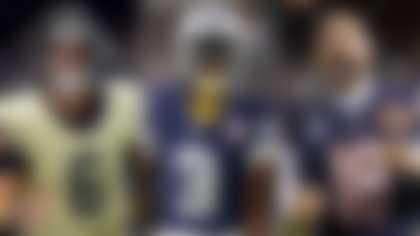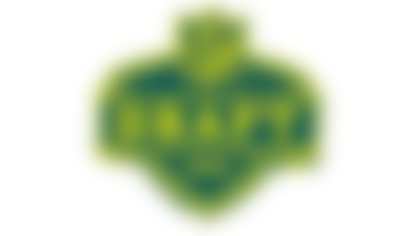THOUSAND OAKS, Calif. -- With NFL teams set to start training camp on time this week, the Los Angeles Rams invited NFL Media to their facility for an exclusive visit three days before players, coaches and other staffers will begin COVID-19 testing in a trailer about 50 yards away from their headquarters.
To describe what the Rams have done to meet and surpass NFL and NFLPA requirements as a massive undertaking would be selling their preparation well short. The real work, though, hasn't really begun.
"It's about education," said Reggie Scott, Rams vice president of Sports Medicine and Performance. "It's not just education by coaches, the athletic trainers and the doctors here. It's also peer-to-peer education. It's self-policing a little bit in terms of making sure we're going to hold each other accountable and make sure that this is just not about your personal health, but it's about the health of the guy next to you."
The Rams' facility is a football-only setup, which is a significant edge over most NFL teams, whose football and business operations tend to be under one roof. The Rams' business offices are in a complex several miles away in Agoura Hills. There are fewer people -- and a smaller area of space -- to address.
Even so, coaches, players and staffers entering into the compound over the next several days will be greeted in a new way, starting with a series of health screening questions that must be passed before they'll even be admitted through the sliding security door to the parking lot. All entrants will be required to wear masks.
Once inside, parking spaces have been radically reduced because of what Scott calls a "Cirque du Soleil" tent that covers at least half of the player lot. It seriously is the size of a small-college gym. The odd part of the tent: It's just the top -- with no walls. This design allows for plenty of air flow, something that's always welcome and comfortable in Southern California and safer than having more than 100 players and coaches in tight, indoor spaces amid this pandemic. The tent is where the Rams will hold team meetings and walkthroughs. Players also will be encouraged to eat their pre-packaged meals there so they can follow social distancing guidelines.
Monday and Tuesday, masked players, coaches and staffers will walk through the tent at pre-scheduled times and into a trailer for COVID-19 testing. Scott said they expect to administer 190 tests on the first go-round. To his knowledge, no players have suggested that they plan to opt out of playing over coronavirus concerns.
"We've been fortunate right now that I haven't had that call," Scott said.
After a nasal swab halfway up each nostril for 15 seconds, they are done. The tests will be performed by Bio Reference, which was agreed upon for all teams by the NFL and NFLPA. Results are expected within 24 hours. No testing equipment, lab work or employees have been taken away from sources that serve the general public, Scott said.
After two days of testing and one day of isolation, there will be a third round of testing on Day 4. Players who test negative three times will then take their physicals, be fitted for equipment and get set for more than a week of strength-and-conditioning training before any football activity begins.
Yes, football activity.
Anyone who tests positive will then need to quarantine or, if experiencing symptoms, will receive needed medical attention. A follow-up test for a person who tests positive but who doesn't require hospitalization will be performed in an isolated drive-through space inside the team compound by the same testing company.
Much of the early days when the team gets together will be spent educating players about the science of COVID-19, Scott said. The Rams also have prepared to help players, coaches and staff with the mental stresses that may arise due to the virus and it's far-reaching impact.
"You have a variance of the way people feel about this in terms of some people don't really think much of it to where some people that are really concerned if they get it, what's going to happen to them or their family," Scott said. "We have to make sure we have resources available for the mental health aspect of it, as well. We're going to really heavily beef up those resources to make sure that we're there for them, their family members."
Before entering the actual football building, players will have to pass though a check-in table daily, clear another round of questions and then put on a contact-tracing clip, which will be placed in a wristband that they must wear everywhere in the facility and on the practice field. This will allow trainers to know where players have been and, more importantly, who they have been around while on site.
Every player also must stare into a facial recognition device that reads their temperatures, as well. If they pass everything, then it's finally into the building.
There are no longer handles on doors. Just a wave of the hand in front of a reader and, voila, doors open.
What used to be a media room is now an auxiliary locker room for roughly 30 rookies. The lockers are set six feet apart and none face each other to help avoid face-to-face encounters. Hand sanitizers are everywhere. Lockers will be scrubbed and sanitized every day with aerosol disinfectants and wipes.
The main locker room has been changed radically, too. The team's new logos and designs had already prompted a complete remodel, but as a result of the pandemic, lockers have been shifted around to create increased space between players. Typically, lockers are set up by position group. Not anymore. Quarterback Jared Goff's locker has moved. More than six feet away is safety John Johnson's locker. Six feet from Johnson's is wide receiver Cooper Kupp's locker. No players who play the same position have lockers close to one another -- a strategic move to help limit potential germ and virus spread among individuals in the same position group, Scott said. It's also a part of a plan to foster a new culture for a team that two seasons ago played in the Super Bowl, but now, after failing to make the playoffs in 2019, is re-discovering itself. Team leaders requested that players interact more with players they might not be as familiar with or spend as much time with so they can get to know guys better.
Like the auxiliary locker room, the main locker room will be sanitized daily if not multiple times a day.
Spacing in the weight rooms and training rooms won't allow for much cross-interaction among players -- if they follow the rules. Scott admits this will be hard, but there will be signage everywhere reminding players about the protocols.
The two hot tubs, which typically can fit up to seven players each, will be limited to just two players apiece. Saunas are closed, turned off and bear doors with a huge "X" taped across them. The number of players allowed in ice tubs will be restricted, as well.
There are so many other precautionary measures the team is taking, such as every player having his own water bottle now, that it seems like there is little that can fall through the cracks. But Scott said he knows there are things that will happen that they haven't accounted for, and that's where preparation and the ability to adjust swiftly but thoughtfully will be incredibly important.
"The biggest thing that I've been telling everybody is you have got to have adaptive capacity," Scott said. "You can see what we knew in March about this virus to what we know today in July are two different things. This is a moving target. It's going to be critical that we're constantly keeping up with the science."












